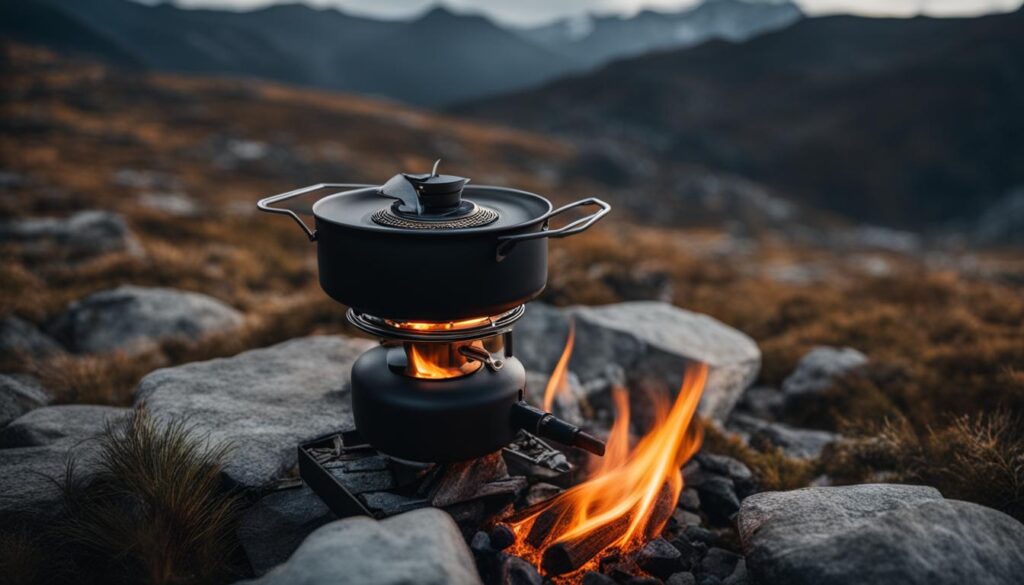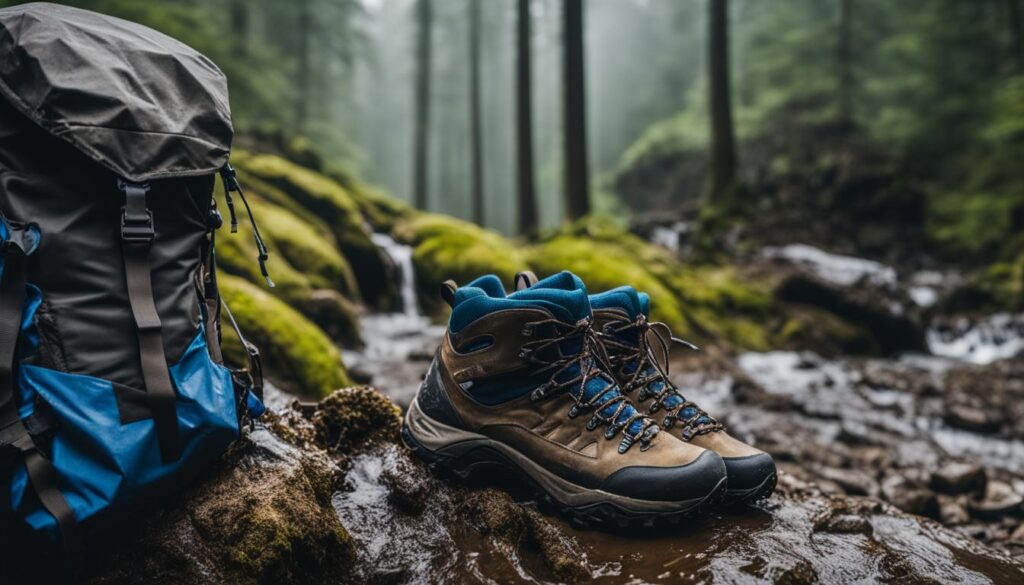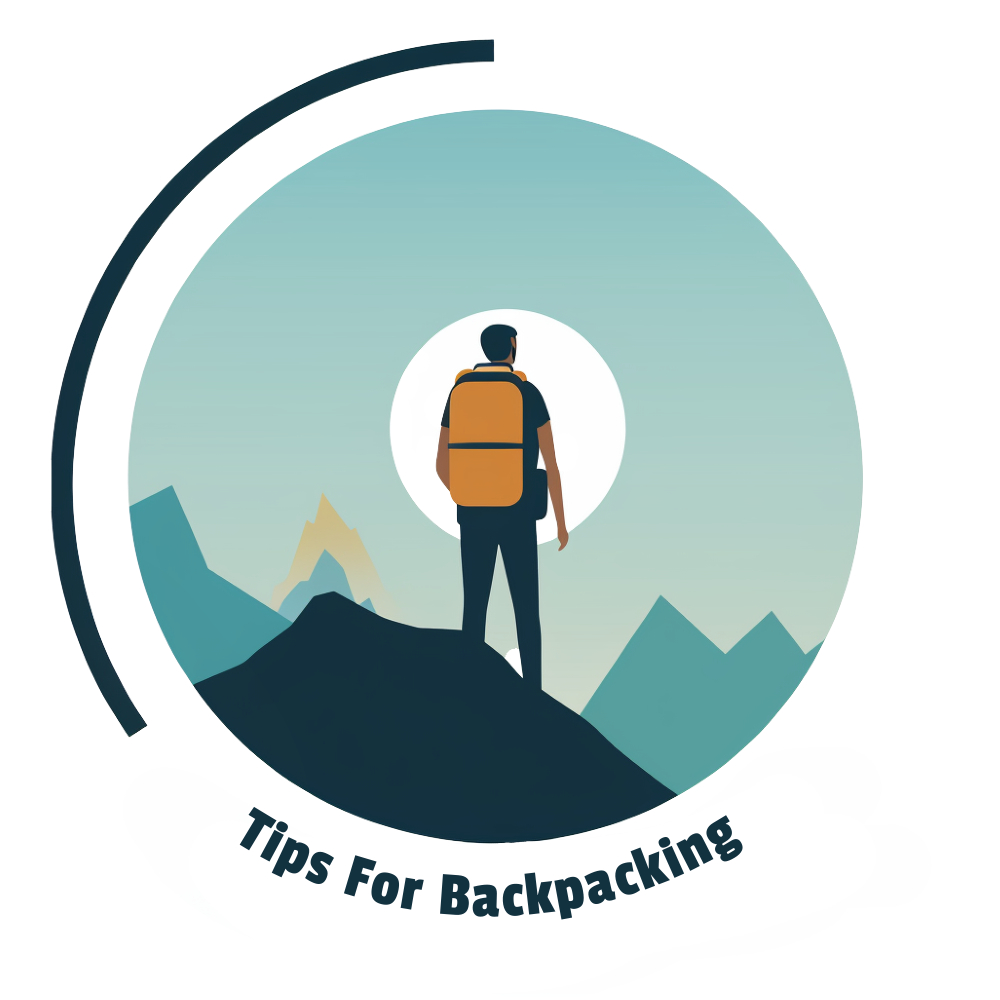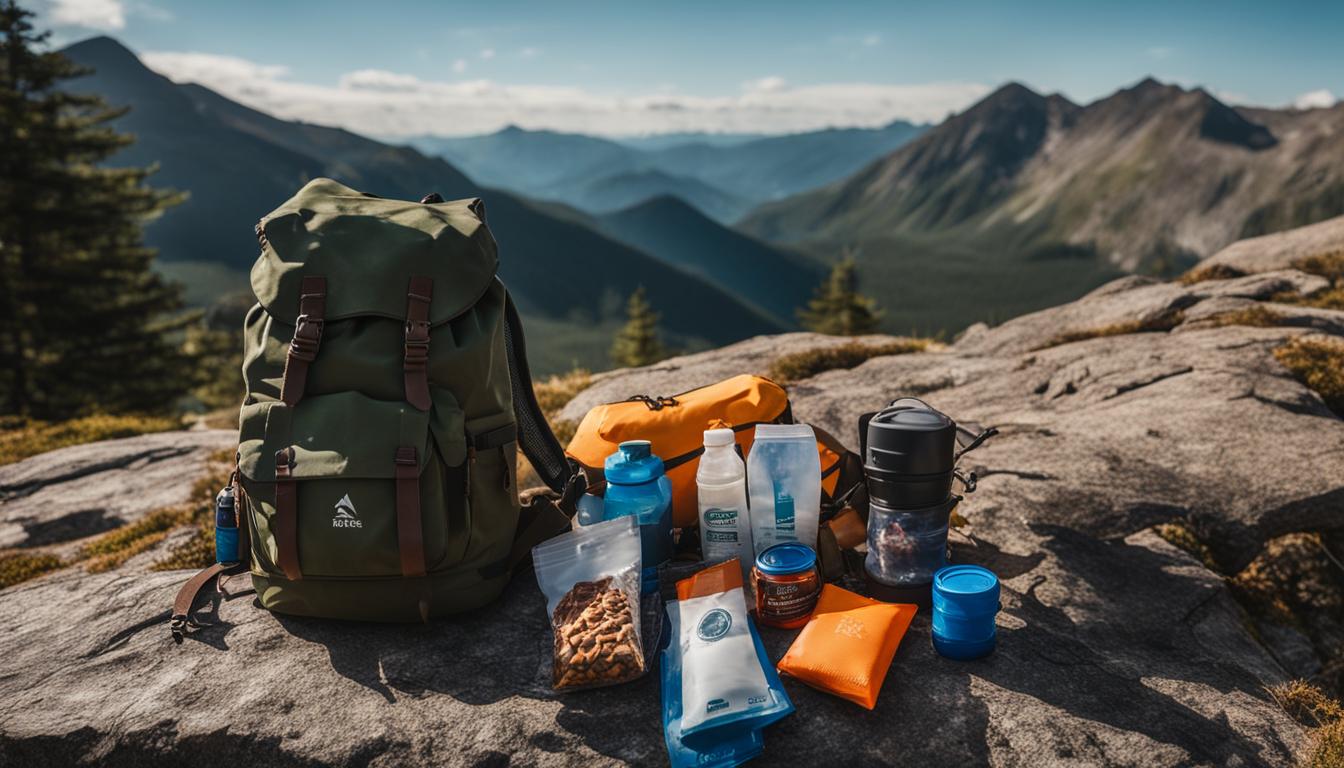Whether I’m a first-time backpacker or a seasoned veteran, having the right gear is essential for a successful trip. From backpacking equipment to kitchen gear, footwear and clothing, and health and hygiene products, it’s important to be prepared. Here is a comprehensive list of essential gear for your first backpacking journey:
Key Takeaways:
- Make sure to have all the necessary gear for a successful backpacking trip.
- Consider lightweight and compact kitchen gear options for convenience.
- Choose the right footwear and clothing for comfort during your journey.
- Being well-prepared is essential for a successful backpacking trip.
- Use a comprehensive checklist to ensure you have everything you need.
Kitchen Gear

When it comes to backpacking, having the right kitchen gear is essential. As you venture into the great outdoors, lightweight and compact options are key. Here are some must-have items to include in your backpacking kitchen kit:
Backpacking Stove and Fuel
A portable backpacking stove is a crucial item for cooking meals on the trail. Look for lightweight models that use a variety of fuel sources, such as canister stoves or liquid fuel stoves. Be sure to bring enough fuel to last your entire trip.
Backpacking Food
Choose lightweight and non-perishable foods that are easy to prepare. Pack freeze-dried meals, energy bars, nuts, dried fruits, and instant coffee or tea. Remember to store your food properly to prevent attracting wildlife.
Cookware and Utensils
Opt for lightweight cookware and utensils that are durable and easy to clean. Consider titanium or aluminum pots and pans, collapsible utensils, and a compact camping mug. Don’t forget essentials like a can opener, a knife, and a cutting board.
| Item | Description | Weight |
|---|---|---|
| Backpacking Stove | Portable stove for cooking meals | 0.5 lbs |
| Fuel Canister | Provides fuel for the stove | 0.3 lbs |
| Freeze-Dried Meals | Lightweight and easy to prepare meals | 0.2 lbs per meal |
| Energy Bars | Quick and nutritious snacks | 0.1 lbs per bar |
| Titanium Cookware | Durable and lightweight pots and pans | 0.4 lbs |
| Collapsible Utensils | Compact and easy to pack utensils | 0.1 lbs |
| Camping Mug | Lightweight and insulated mug for hot beverages | 0.2 lbs |
Remember to pack all your kitchen gear in a waterproof stuff sack to keep everything organized and protected from the elements. With the right kitchen gear, you’ll be able to enjoy delicious meals and hot drinks during your backpacking adventure.
Footwear and Clothing

Choosing the right footwear and clothing is crucial for a comfortable backpacking trip. When it comes to hiking boots or shoes, it’s important to find a pair that provides the right balance of support and comfort. Look for boots with good ankle support and a sturdy sole that can handle various terrains. For those who prefer hiking shoes, opt for lightweight and breathable options that still offer ample traction.
Hiking socks are another essential item that should not be overlooked. Invest in moisture-wicking socks made of wool or synthetic materials to keep your feet dry and prevent blisters. Packing enough pairs for the duration of your trip is essential, as clean, dry socks can make a big difference in your overall comfort.
When it comes to pants or shorts, choose options made of quick-drying and durable materials. Convertible pants that can be zipped off into shorts are a versatile choice, allowing you to adapt to changing weather conditions. Additionally, packing a rain jacket or hardshell is crucial for staying dry in case of unexpected showers. Look for jackets with waterproof and breathable properties for optimal protection.
To stay warm during chilly nights and colder climates, consider packing a down or synthetic jacket. Down jackets provide excellent insulation and are lightweight and compressible, making them easy to pack. Synthetic jackets are a more affordable option and offer insulation even when wet. Layering your clothing is key to staying comfortable in changing temperatures, so pack lightweight base layers and midlayers that can be easily added or removed as needed.
Summary
- Choose hiking boots or shoes with good ankle support and traction.
- Invest in moisture-wicking socks to keep your feet dry and prevent blisters.
- Pack quick-drying and durable pants or shorts, along with a rain jacket or hardshell for weather protection.
- Stay warm with a down or synthetic jacket and layer your clothing for versatility.
| Item | Features |
|---|---|
| Hiking Boots | Ankle support, sturdy sole |
| Hiking Shoes | Lightweight, breathable, traction |
| Hiking Socks | Moisture-wicking, wool or synthetic material |
| Hiking Pants or Shorts | Quick-drying, durable, convertible options |
| Rain Jacket or Hardshell | Waterproof, breathable |
| Down or Synthetic Jacket | Insulation, lightweight |
What Gear Should I Bring for My First Backpacking Journey in the Fall?
When preparing for your first backpacking journey in the fall, it’s essential to have the right backpacking gear essentials for fall. Make sure to pack layers for changing weather, a durable tent and sleeping bag, a reliable water filtration system, a compact stove for warm meals, and a comfortable pair of hiking boots.
Conclusion
As I wrap up this article, I want to emphasize the importance of having a backpacking checklist to ensure you have all the necessary gear for your trip. It’s not just about the adventure, but also about being well-prepared and enjoying your outdoor experience to the fullest.
Remember, backpacking equipment is at the core of a successful journey. From sturdy tents and cozy sleeping bags to reliable backpacks and versatile cooking gear, make sure you have everything you need before hitting the trails.
But it doesn’t stop there. Don’t forget to pack appropriate footwear and clothing to keep you comfortable and protected from the elements. Invest in quality hiking boots or shoes, moisture-wicking socks, and layers of clothing suitable for the weather conditions you’ll encounter.
So, whether you’re a beginner or a seasoned backpacker, having the right outdoor gear is a game-changer. Plan ahead, do your research, and use this comprehensive backpacking checklist as a guide to ensure you’re well-equipped for your next adventure. Happy trails!

